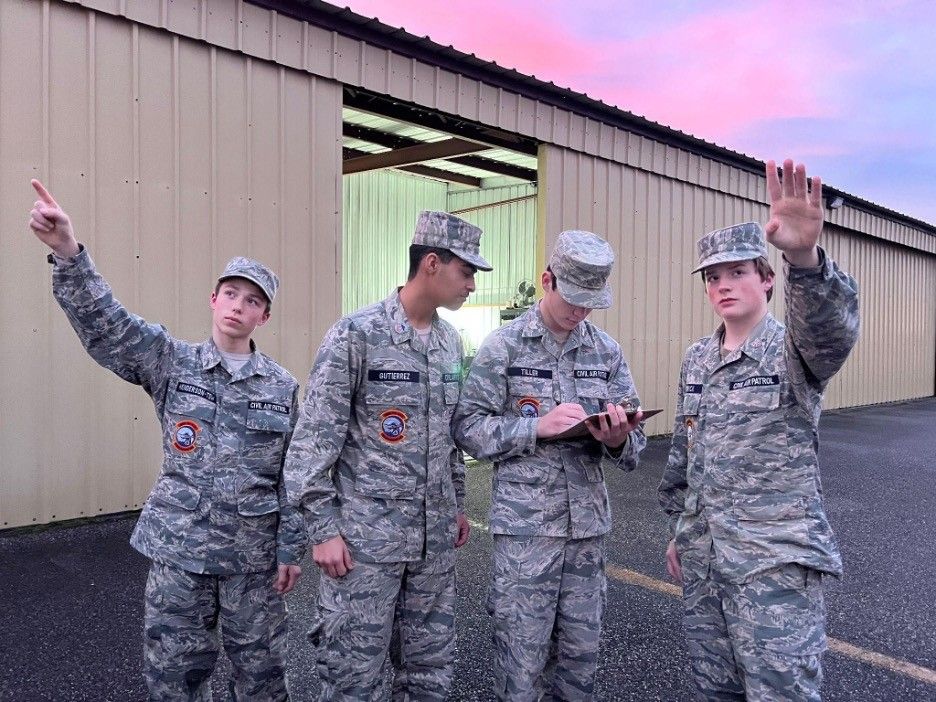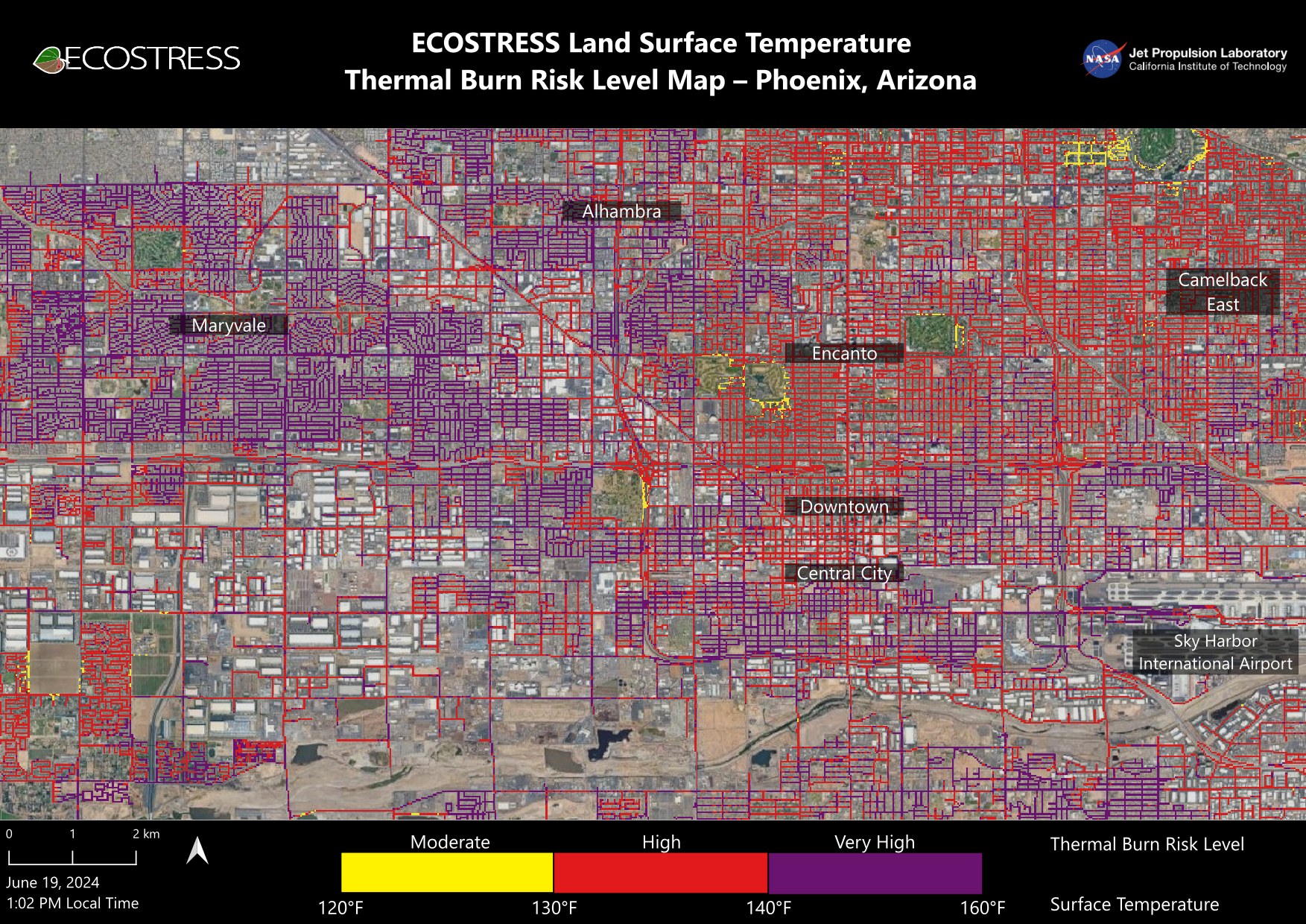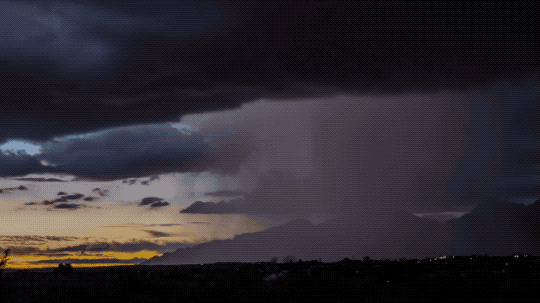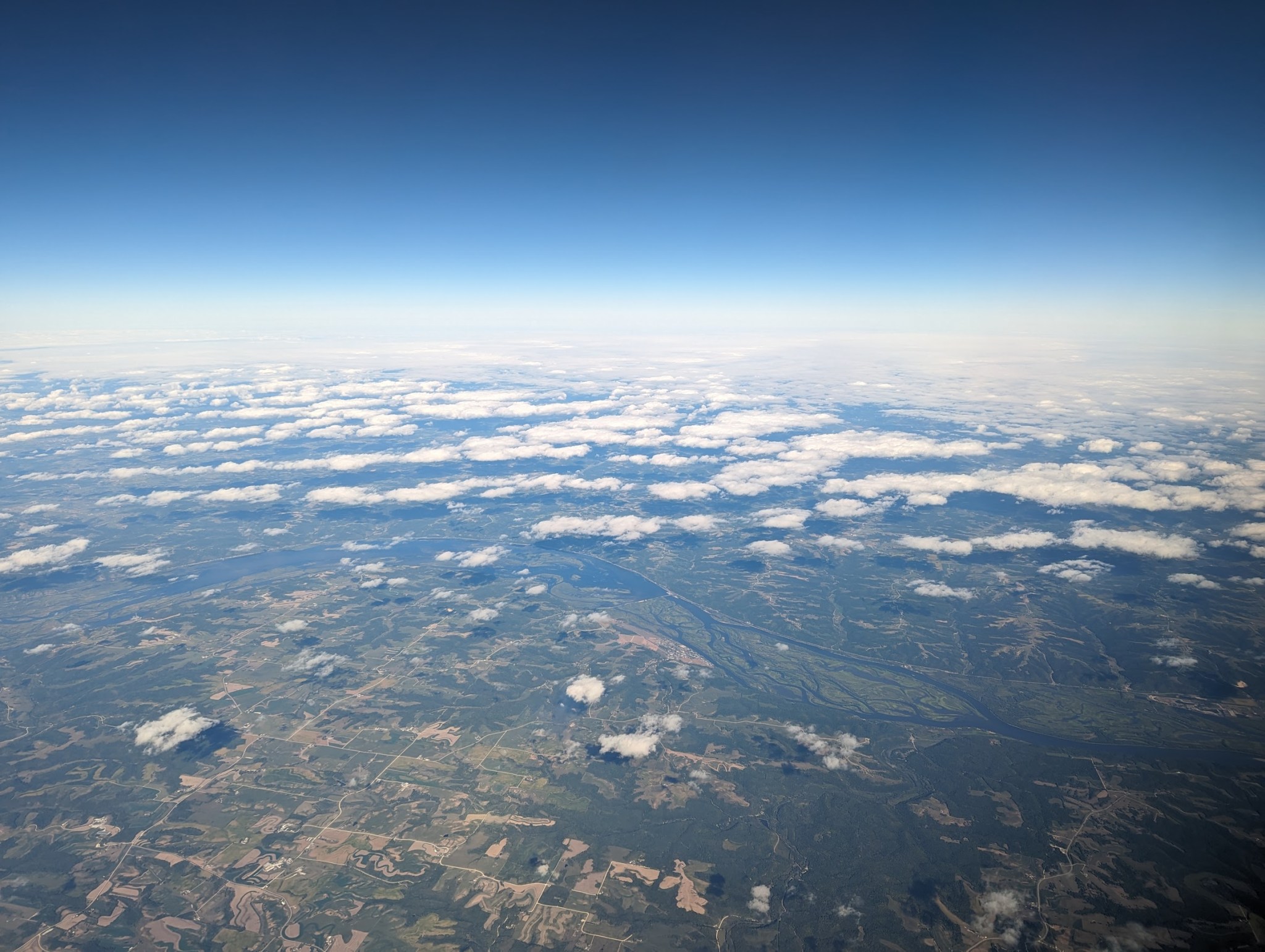Explore This Section Science Science Activation 2025 Aviation Weather Mission:… Overview Learning Resources Science Activation Teams SME Map Opportunities More Science Activation Stories Citizen Science 2 min read 2025 Aviation Weather Mission: Civil Air Patrol Cadets Help Scientists Study the Atmosphere with GLOBE Clouds The Science Activation Program’s NASA Earth Science Education Collaborative (NESEC) is working alongside the Civil Air Patrol (CAP) to launch the 2025 Aviation Weather Mission. The mission will engage cadets (students ages 11-20) and senior members to collect aviation-relevant observations including airport conditions, Global Learning…
Read MoreTag: Weather and Atmospheric Dynamics
NASA’s ECOSTRESS Maps Burn Risk Across Phoenix Streets
3 min read Preparations for Next Moonwalk Simulations Underway (and Underwater) NASA’s ECOSTRESS instrument on June 19 recorded scorching roads and sidewalks across Phoenix where contact with skin could cause serious burns in minutes to seconds, as indicated in the legend above. NASA/JPL-Caltech Roads and sidewalks in some areas get so hot that skin contact could result in second-degree burns. Researchers at NASA’s Jet Propulsion Laboratory in Southern California have mapped scorching pavement in Phoenix where contact with skin — from a fall, for example — can cause serious burns.…
Read MoreWhat’s Made in a Thunderstorm and Faster Than Lightning? Gamma Rays!
3 min read What’s Made in a Thunderstorm and Faster Than Lightning? Gamma Rays! A flash of lightning. A roll of thunder. These are normal stormy sights and sounds. But sometimes, up above the clouds, stranger things happen. Our Fermi Gamma-ray Space Telescope has spotted bursts of gamma rays – some of the highest-energy forms of light in the universe – coming from thunderstorms. Gamma rays are usually found coming from objects with crazy extreme physics like neutron stars and black holes. So why is Fermi seeing them come from thunderstorms? About a thousand times a…
Read MoreAWE Launching to Space Station to Study Atmospheric Waves via Airglow
4 min read AWE Launching to Space Station to Study Atmospheric Waves via Airglow NASA’s Atmospheric Waves Experiment, or AWE, mission is scheduled to launch to the International Space Station in November 2023, where it will make use of a natural, ethereal glow in Earth’s sky to study waves in our planet’s atmosphere. Built by Utah State University’s Space Dynamics Laboratory in North Logan, Utah, AWE will be mounted on the exterior of the space station. From this perch, AWE will stare down toward Earth, tracking undulations in the air…
Read More


